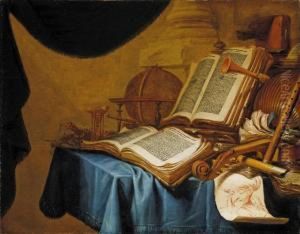Jan Ver Meulen Paintings
Jan Ver Meulen, also known as Jan van der Meulen or Jean van der Meulen, was a Flemish Baroque painter who specialized in landscapes and battle scenes. He was born in Brussels in 1628 and is often associated with the French court, where he worked for a significant period of his life.
Ver Meulen was the son of the painter Daniel van der Meulen and was initially trained by his father. However, his style was greatly influenced by his travels and the artists he encountered along the way. He was particularly influenced by the works of Pieter Snayers, another Flemish painter known for his battle scenes, and Adam Frans van der Meulen, with whom he is sometimes confused due to the similarity of their names and artistic subjects.
In 1664, Jan Ver Meulen moved to Paris, where he was received into the Académie Royale de Peinture et de Sculpture. His work caught the eye of King Louis XIV, who appreciated the grandeur and detail of his battle scenes. Ver Meulen was commissioned to create a series of works depicting the king's military campaigns, which were used for propaganda purposes to glorify the king's achievements. These works were often collaborative, with Ver Meulen painting the landscapes and battles, while other court artists added portraits or allegorical figures.
Ver Meulen's paintings were characterized by their dynamic compositions, attention to detail, and the use of color to enhance the drama of the scenes. His battle scenes were not only accurate depictions of the events but also conveyed the chaos and intensity of warfare.
Despite his success, little is known about Ver Meulen's personal life, and his work was sometimes overshadowed by other court painters. Nevertheless, his contributions to the genre of battle painting were significant, influencing subsequent generations of artists.
Jan Ver Meulen died in 1691. Today, his works are held in various museums and collections across Europe, and they continue to be studied for their historical value and artistic merit.
